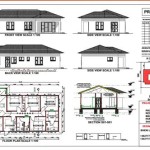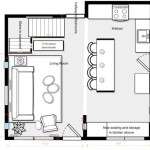Insulated Outdoor Cat House Plans: Essential Aspects To Consider
Providing shelter for your furry feline friend during the cold winter months is crucial for their well-being. An insulated outdoor cat house serves as a warm and cozy retreat, protecting them from harsh elements like wind, rain, and snow. When planning an insulated outdoor cat house, it's essential to consider several key aspects to ensure its effectiveness and comfort.
1. Insulation
Insulation is the most critical element of an outdoor cat house. It prevents heat loss and keeps the interior warm, even when temperatures drop. Choose insulation with an R-value of at least 5 for efficient temperature regulation. Common insulating materials include fiberglass batts, spray foam, and rigid foam panels.
2. Ventilation
Adequate ventilation is necessary to prevent condensation and moisture buildup within the house. Incorporate small vents or louvers to allow for airflow. Position the vents on opposite ends of the house to promote cross-ventilation.
3. Elevated Floor
Elevating the floor of the cat house off the ground provides insulation from the cold ground and prevents moisture penetration. Use wooden or plastic supports to raise the house a few inches.
4. Size and Layout
The size of the cat house should be appropriate for the number of cats using it. Allow at least 2-3 square feet of floor space per cat. The layout should include a dedicated sleeping area, preferably in the back of the house, to provide maximum warmth.
5. Entryway
The entryway of the cat house should be designed to minimize heat loss. Consider using a flap-style door with weatherstripping to seal the opening when the cat enters or exits.
6. Materials
Choose durable and weather-resistant materials for the construction of the cat house. Plywood, OSB, or insulated panels are suitable options for the walls and roof. Use treated lumber for the frame to prevent rot.
7. Height
The height of the cat house should allow the cats to stand up comfortably and move around freely. Aim for a minimum height of 24 inches for adult cats.
8. Drainage
Slope the roof of the cat house slightly to ensure proper drainage. Prevent water from pooling on the roof by using a waterproof membrane or shingles.
9. Aesthetic Considerations
While functionality should be prioritized, it doesn't hurt to consider the aesthetic appeal of the cat house. Choose colors and materials that complement the surroundings or match the architectural style of your home.
By following these essential aspects when planning your insulated outdoor cat house, you can provide your feline companions with a warm, cozy, and safe shelter to brave the cold winter months.
15 Diy Outdoor Cat House Plans For Feline Shelter

Cat House Roof Plans Myoutdoorplans

Image Result For Diy Outdoor Cat Shelter House Plans

Outdoor Cat House Plans Unfinished Insulated With Heater Insulatedcathouse Feral

15 Diy Outdoor Cat House Plans For Feline Shelter

Cat House Plans Insulated Feral Diy

Outdoor Cat House Plans Myoutdoorplans

Outdoor Cat House Plans Howtospecialist How To Build Step By Diy

Outdoor Cat Houses Insulated Pet House With Platform Shelter Diy

Diy Insulated Cat House Inexpensive








